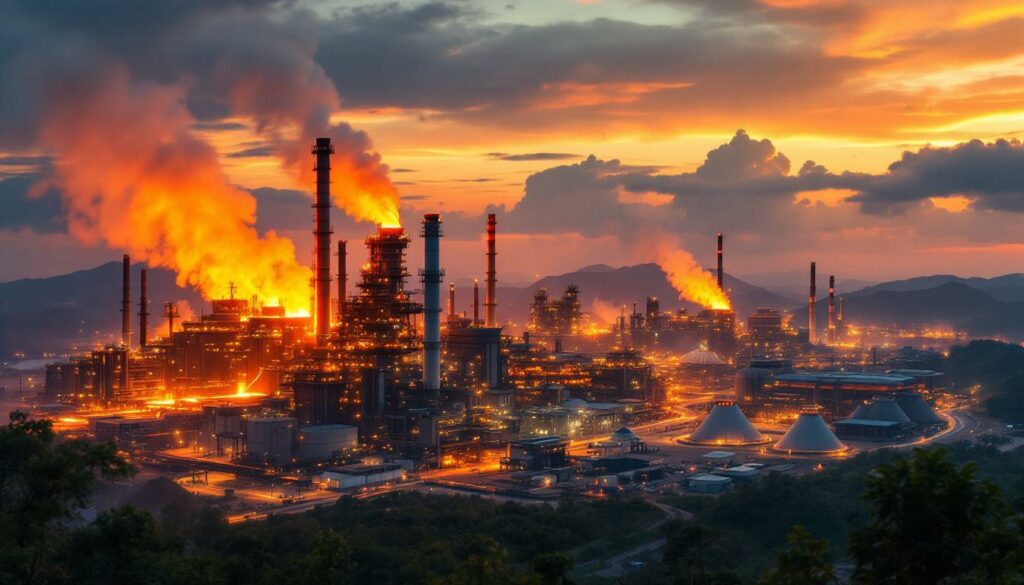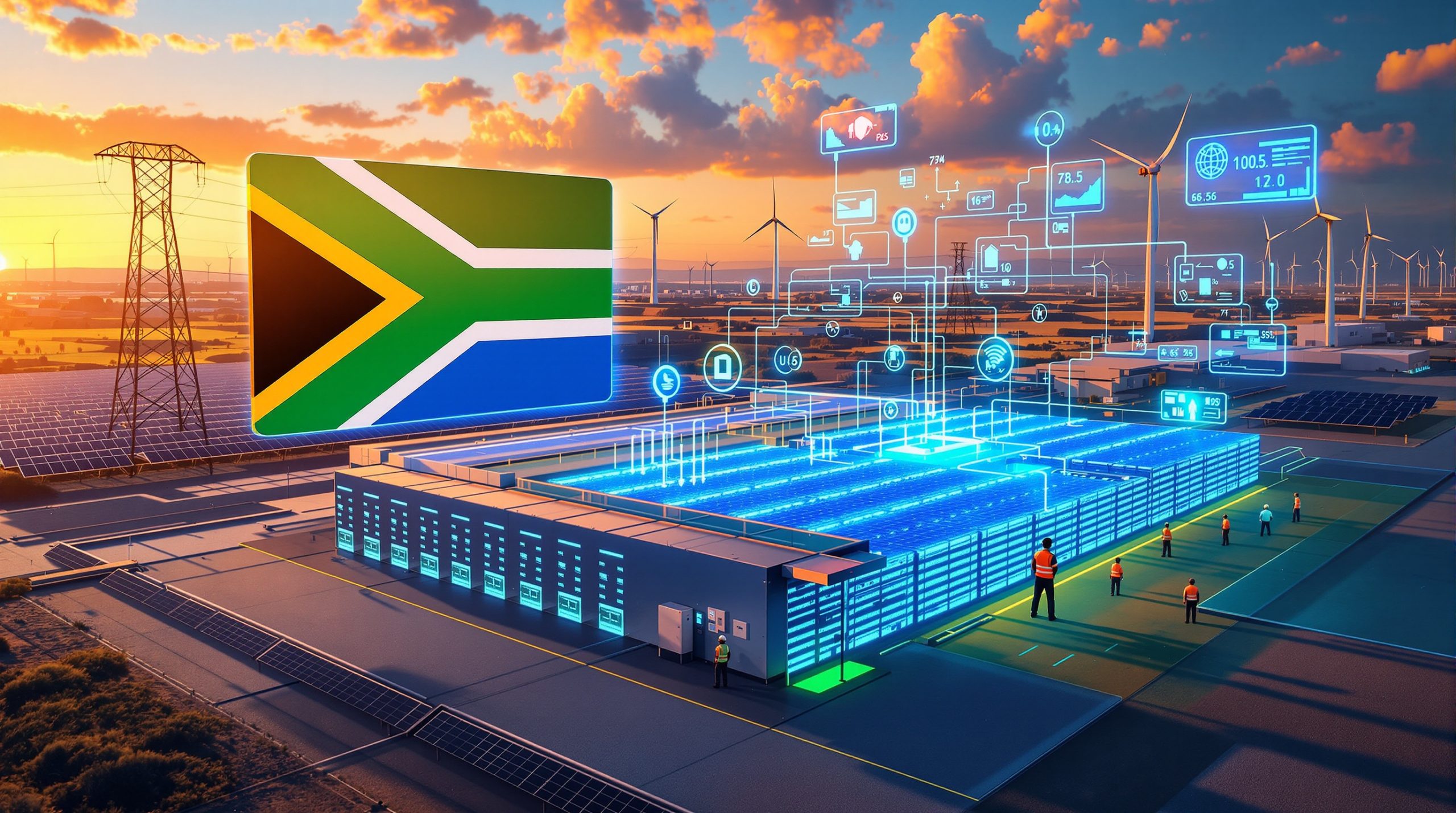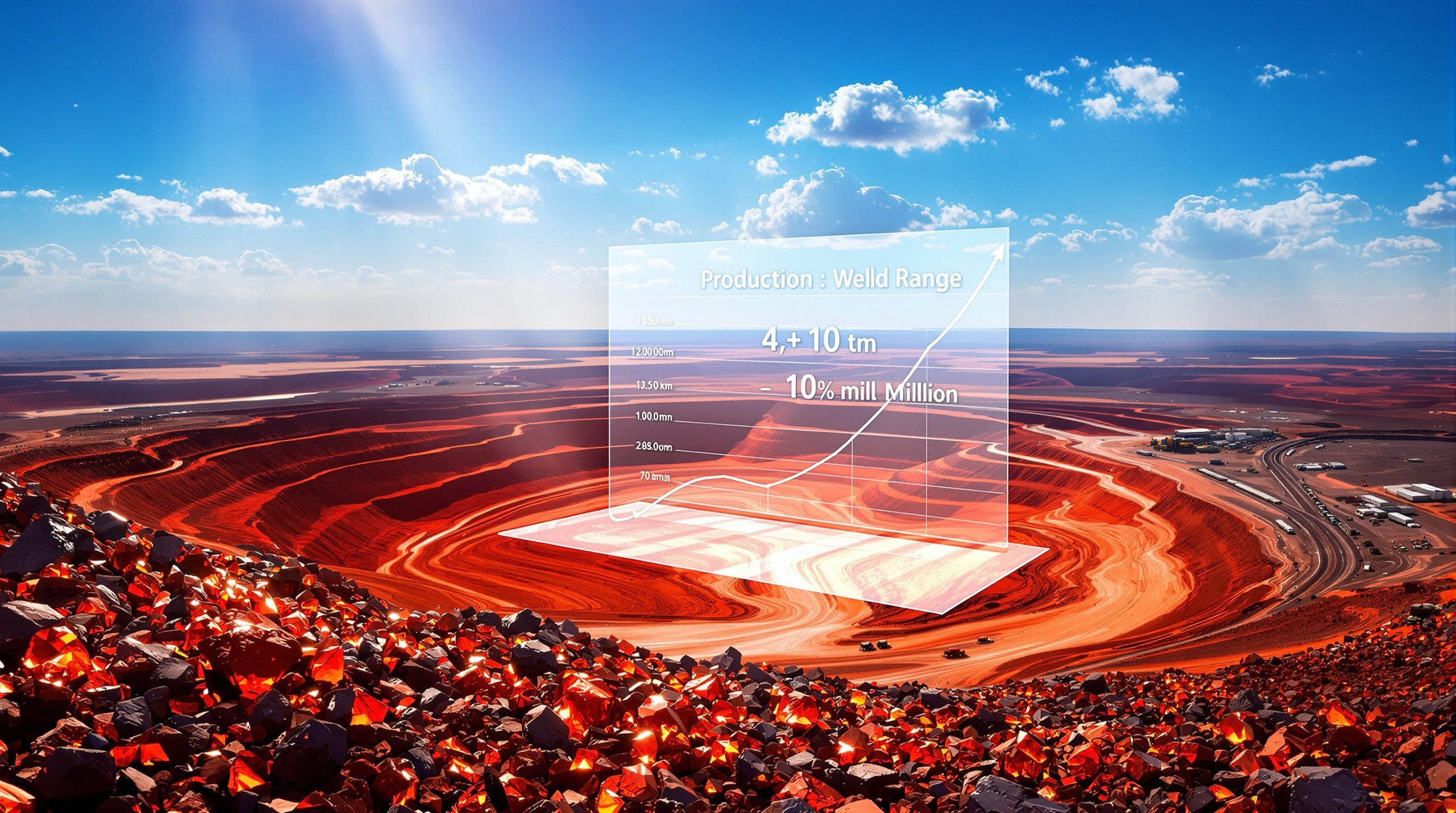How Are Chinese Tycoons Transforming Indonesia's Aluminum Industry?
Indonesia is rapidly emerging as a global aluminum powerhouse, driven by massive Chinese investments that mirror the country's earlier nickel boom. This strategic shift is reshaping global aluminum markets and creating new economic opportunities in Southeast Asia. Chinese tycoons are leading a transformation that could fundamentally alter the global aluminum landscape.
The Rise of Indonesia as an Aluminum Giant
Chinese Investment Driving Unprecedented Growth
Chinese metals magnates are pouring billions into Indonesian aluminum projects at a pace that has stunned industry observers. Goldman Sachs projects Indonesian aluminum production will increase five-fold by 2030, dramatically shifting the global supply balance.
Three major Chinese companies are spearheading this transformation:
- Tsingshan Holding Group – Already dominant in nickel, now expanding aggressively into aluminum
- China Hongqiao Group – World's largest aluminum producer seeking overseas expansion
- Shandong Nanshan Aluminum – Diversifying production beyond China's borders
"Over the next five years, Indonesia will become the focal point for the global aluminum industry," predicts Alan Clark, director of metals consultancy CM Group.
Indonesia's Strategic Advantages
Indonesia offers Chinese investors a compelling package of competitive advantages:
- Resource abundance: Substantial bauxite reserves that form the foundation for aluminum production
- Energy access: Plentiful coal resources providing affordable power for energy-intensive smelting
- Labor economics: Wage structures significantly more competitive than China
- Policy environment: Government regulations actively encouraging downstream processing
"Indonesia's combination of resources, reasonable power costs, and supportive policies creates a perfect storm for aluminum sector growth," notes industry analyst Andy Farida of Fastmarkets Ltd.
The Indonesian government's export restrictions have created urgency for on-site processing, accelerating investment timelines for Chinese mining expansion seeking to maintain access to critical raw materials.
Why Are Chinese Companies Investing in Indonesia?
Production Constraints in China
Chinese aluminum giants face mounting challenges at home:
- Stringent energy consumption caps limiting production growth
- Environmental regulations tightening on carbon-intensive industries
- Rising production costs eroding profit margins
- Overcapacity concerns prompting government restrictions
These domestic constraints have forced Chinese producers to look beyond their borders, with Indonesia emerging as a prime destination for relocated capacity.
Securing Raw Material Access
Indonesia's 2023 bauxite export ban created an immediate imperative for Chinese companies to establish local processing operations. While a typical alumina refinery costs approximately $1 billion to construct, this investment has become necessary to ensure continued access to this critical resource.
Chinese metals tycoons are adopting innovative approaches to manage costs, including:
- Relocating entire processing plants from China to Indonesia
- Acquiring machinery from closed factories to establish new operations
- Negotiating favorable terms with local partners and government officials
"When Indonesia banned bauxite exports, Chinese companies had to adapt quickly," explains Agustinus Tan from PT Laman Mining. "Many are literally dismantling factories in China and rebuilding them here."
Diversification Strategy
The investment push also represents a strategic diversification away from excessive dependence on Guinea, the world's largest bauxite producer. Guinea has recently canceled mining rights for companies refusing to build local refineries, creating additional uncertainty.
By developing multiple resource bases across Southeast Asia, Chinese aluminum producers are:
- Spreading geopolitical risk across different jurisdictions
- Creating supply redundancy to prevent disruptions
- Establishing processing hubs closer to growing Asian markets
- Reducing shipping costs and logistical complexities
This multi-country approach mirrors successful strategies employed by global mining giants like Rio Tinto and Alcoa.
What Projects Are Currently Underway?
Refinery Expansion Timeline
Indonesia's aluminum sector is witnessing unprecedented development activity:
- Three new alumina refineries will begin operations in 2025
- At least three additional refineries are expected by the end of 2027
- These expansions will increase Indonesia's processing capacity more than 500% within five years
These facilities will transform raw bauxite into alumina (aluminum oxide), the intermediate material required for aluminum production. Each refinery represents approximately $1 billion in investment and creates hundreds of direct jobs.
Smelter Development Progress
The smelting landscape is similarly transformative:
- Two aluminum smelters are already operational in Indonesia
- Four additional smelters are expected to come online by 2030, according to Goldman Sachs
- Tsingshan's first aluminum smelter was commissioned in 2023, with a significantly larger facility scheduled to begin production in 2026
"When Tsingshan entered into aluminum, everyone was shocked," notes Andy Farida of Fastmarkets. "They are diversifying away from their traditional nickel focus, and their entry signals a major shift."
Investment Scale and Scope
The investment commitments rival Indonesia's previous nickel boom, encompassing the entire aluminum value chain:
- Bauxite mining operations to secure raw material supply
- Alumina refineries to process bauxite into intermediate material
- Smelting facilities to produce primary aluminum
- Downstream fabrication for higher-value products
Chinese companies are bringing technical expertise and equipment from their existing operations, accelerating the development timeline and reducing startup challenges.
| Phase | Current Status | 2030 Projection | Growth Factor |
|---|---|---|---|
| Bauxite Mining | Limited domestic processing | Major global supplier | 10x increase |
| Alumina Refining | Early development | 6+ major refineries | 5x increase |
| Aluminum Smelting | 2 operational smelters | 6+ operational smelters | 3x increase |
Will Indonesia Repeat Its Nickel Success Story?
The Nickel Precedent
Indonesia's nickel industry transformation provides a compelling precedent:
- Indonesia's share of global nickel production rose from 7% to 60% in just one decade
- The rapid expansion forced global miners like BHP to close operations elsewhere
- Chinese capital and technology were key enablers of the nickel boom
This dramatic success story has fundamentally reshaped global nickel markets and created a template for Indonesia's resource development strategy.
Challenges Specific to Aluminum
Despite the promising outlook, aluminum faces distinct challenges:
- Indonesia's bauxite reserves, while substantial, are not as extensive as its nickel resources
- Aluminum production requires significantly more reliable electricity supply than nickel processing
- Global market conditions create uncertainty if prices remain around $2,500/ton
- Environmental concerns about coal-powered production may impact market access
Industry veteran Liu Defei highlights the power challenge: "Many in the market believe most of these plans will never materialize. If smelters can't secure safe and affordable electricity, they're at a dead end."
Expert Perspectives on Growth Potential
Industry opinions remain divided:
- Alan Clark, CM Group: "Over the next five years, Indonesia will become the focal point for the global aluminum industry."
- Liu Defei, veteran industry analyst: "Many in the market believe most of these plans will never materialize."
- Andy Farida, Fastmarkets Ltd: "I don't think we should doubt what the Chinese are able to do. If they are able to do what they did in nickel, it would not be surprising if the forecasts look far too low."
This range of perspectives highlights both the opportunity and uncertainty surrounding Indonesia's aluminum ambitions.
How Is Indonesia's Government Supporting This Growth?
Strategic Resource Policies
Indonesia's resource nationalism strategy has evolved systematically:
- President Joko Widodo implemented the 2023 bauxite export ban as part of a broader "downstreaming" policy
- President Prabowo Subianto has continued this economic strategy since taking office
- The government is actively seeking to replicate its nickel industry success in the aluminum sector
By restricting raw material exports, Indonesia forces foreign companies to build processing facilities domestically, creating significantly more economic value than mere resource extraction.
Economic Development Goals
The aluminum industry expansion supports several national objectives:
- Creating manufacturing jobs beyond basic mining operations
- Generating revenue to fund ambitious social programs, including universal free school meals
- Building financial foundations for a planned sovereign wealth fund
- Developing technical expertise within the local workforce
"Indonesia wants to move up the value chain, not just be a supplier of raw materials," explains an Indonesian mining ministry official. "Aluminum represents the next frontier in this strategy."
Infrastructure Support
The government is backing its aluminum ambitions with substantial infrastructure investments:
- Expanding power generation capacity to support energy-intensive smelting operations
- Developing transportation networks for moving materials and finished products
- Establishing industrial zones dedicated to mineral beneficiation opportunities
- Streamlining permitting processes for strategic projects
These coordinated efforts demonstrate Indonesia's commitment to building a world-class aluminum industry.
What Are the Global Market Implications?
Potential Market Disruption
Indonesia's aluminum expansion could create significant market impacts:
- Indonesia is poised to join the ranks of major global aluminum producers by 2030
- This mirrors the nickel market experience, where Indonesian production created global oversupply
- Established producers in regions with higher costs may face profitability challenges
Citigroup analysts remain cautious about new supply additions, particularly if aluminum prices remain around $2,500 per ton. However, Indonesia's cost advantages may allow profitable production even at these price levels.
Environmental Considerations
The environmental profile of Indonesian aluminum raises concerns:
- Heavy reliance on coal power results in carbon intensity higher than the global average
- Future carbon border adjustments in key markets could impact competitiveness
- Increasing investor focus on ESG metrics may influence capital availability
- Potential for renewable energy integration remains limited in the near term
These factors could impact the marketability of Indonesian aluminum in environmentally conscious markets, particularly Europe.
Supply Chain Reconfiguration
The global aluminum landscape is undergoing a fundamental shift:
- Trade flows will evolve as Indonesia becomes a major exporter
- Traditional aluminum producers face increased competitive pressure
- Chinese companies gain greater control over upstream supply
- Pricing power may shift toward integrated producers with access to low-cost energy
"We're witnessing a historic realignment of global aluminum production," notes Alan Clark. "The industry's center of gravity is shifting toward Southeast Asia."
Case Study: Tsingshan's Aluminum Strategy
From Nickel to Aluminum
Tsingshan Holding Group, led by billionaire Xiang Guangda, exemplifies the Chinese-led transformation:
- Tsingshan spearheaded Indonesia's nickel boom with massive investments
- The company is now applying the same aggressive growth model to aluminum
- Industry observers were stunned by Tsingshan's entry into aluminum given its nickel focus
"When Tsingshan entered into aluminum, everyone was shocked," recalls Andy Farida. "They are diversifying away from their traditional focus, and their manufacturing expertise transfers surprisingly well."
Competitive Advantages
Tsingshan's competitive edge comes from several factors:
- Ruthless focus on cost control and operational efficiency
- Vertically integrated business model from raw materials to finished products
- Experience navigating Indonesia's complex regulatory environment
- Strong government relationships facilitating project approvals
- Ability to rapidly scale operations beyond initial projections
These advantages have allowed Tsingshan to succeed where many Western companies hesitated to invest.
Future Expansion Plans
Tsingshan's aluminum roadmap is ambitious:
- First aluminum smelter commissioned in 2023
- Significantly larger smelter scheduled to begin production in 2026
- Continued vertical integration to capture value across the supply chain
This expansion represents a strategic diversification that reduces Tsingshan's reliance on nickel markets while leveraging its Indonesian operational experience.
Will These Projects Succeed?
Critical Success Factors
Several factors will determine the ultimate success of Indonesia's aluminum ambitions:
- Power supply: Securing reliable and affordable electricity remains the most significant challenge
- Bauxite resources: Ensuring sufficient mining capacity to feed new refineries
- Government policy: Maintaining favorable regulations and incentives
- Market conditions: Sustaining viable aluminum prices amid increased supply
- Technical execution: Successfully implementing complex processing technologies
The power challenge is particularly critical, as aluminum smelting requires enormous amounts of stable electricity.
Market Skepticism
Not all industry observers share the optimistic outlook:
- Some analysts doubt all announced projects will materialize
- Liu Defei points specifically to power supply constraints as a potential dealbreaker
- Citigroup analysts note minimal new supply additions globally if prices remain around $2,500/ton
- Environmental concerns could impact project viability or market access
"If smelters can't secure safe and affordable electricity at competitive prices, they're at a dead end," cautions Liu Defei.
Historical Precedent
However, Indonesia's nickel industry exceeded most growth projections despite similar early skepticism:
- Chinese companies have repeatedly demonstrated the ability to rapidly scale operations
- Indonesia's government has shown unwavering commitment to its downstreaming strategy
- The financial incentives remain compelling despite market uncertainties
"If they are able to do what they did in nickel, it would not be surprising if the forecasts look far too low," concludes Andy Farida.
FAQ: Indonesia's Aluminum Industry Transformation
How does Indonesia's aluminum industry compare to its nickel sector?
Indonesia's aluminum industry is following a similar growth trajectory to its nickel sector but is at an earlier stage. While nickel production grew from 7% to 60% of global output over a decade, aluminum is just beginning its expansion, with projections showing a five-fold increase by 2030. The aluminum sector faces additional challenges, particularly around power supply and bauxite project economic benefits.
What makes Indonesia attractive for aluminum production?
Indonesia offers a compelling combination of abundant bauxite reserves, affordable coal-powered electricity, competitive labor costs, and government policies that encourage downstream processing through export bans on raw materials. These factors create a cost structure that potentially allows Indonesian production to remain competitive even during market downturns.
How are Chinese companies involved in Indonesia's aluminum industry?
Chinese companies including Tsingshan Holding Group, China Hongqiao Group, and Shandong Nanshan Aluminum are investing billions in Indonesian smelters and refineries. They bring capital, technology, and operational expertise from China, often literally relocating entire processing plants to Indonesia. This transfer of industrial capacity is accelerating Indonesia's development timeline dramatically.
What challenges could limit Indonesia's aluminum growth?
Potential limitations include power supply constraints (aluminum smelting requires enormous amounts of reliable electricity), bauxite reserve quality and quantity (not as abundant as nickel), global aluminum price fluctuations (currently around $2,500/ton), and environmental concerns related to coal-powered production. Of these, securing affordable and reliable power represents the most significant hurdle.
Further Exploration
Readers interested in learning more about global aluminum industry trends can also explore related educational content from MINING.com, which offers additional perspectives on developments in the metals and mining industry evolution. Additionally, those concerned about environmental impacts might want to investigate emerging approaches to sustainability transformation in the mining sector.
Want to Profit from the Next Major Mineral Discovery?
Discovery Alert's proprietary Discovery IQ model instantly notifies investors about significant ASX mineral discoveries, transforming complex data into actionable insights for both short-term traders and long-term investors. Understand why historic discoveries can generate substantial returns by visiting Discovery Alert's dedicated discoveries page and begin your 30-day free trial today to position yourself ahead of the market.




